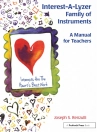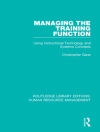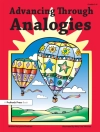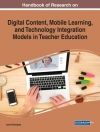Charles Darwin has been extensively analysed and written about as a scientist, Victorian, father and husband. However, this is the first book to present a carefully thought out pedagogical approach to learning that is centered on Darwin’s life and scientific practice. The ways in which Darwin developed his scientific ideas, and their far reaching effects, continue to challenge and provoke contemporary teachers and learners, inspiring them to consider both how scientists work and how individual humans ‘read nature’. Darwin-inspired learning, as proposed in this international collection of essays, is an enquiry-based pedagogy, that takes the professional practice of Charles Darwin as its source. Without seeking to idealise the man, Darwin-inspired learning places importance on: • active learning • hands-on enquiry • critical thinking • creativity • argumentation • interdisciplinarity. In an increasingly urbanised world, first-hand observations of living plants and animals are becoming rarer. Indeed, some commentators suggest that such encounters are under threat and children are living in a time of ‘nature-deficit’. Darwin-inspired learning, with its focus on close observation and hands-on enquiry, seeks to re-engage children and young people with the living world through critical and creative thinking modeled on Darwin’s life and science.
Содержание
Foreword; Acknowledgements; Open Window; Introduction: Darwin-Inspired Learning; Darwin’s Heritage; Entering Darwin’s Life; The World of Downe: Charles Darwin’s Living Laboratory; ‘Pester Them with Letters’: Using Darwin’s Correspondence in the Classroom: The Darwin Correspondence Project; Developing a Sense of Place; Learning in Cultivated Gardens and Other Outdoor Landscapes; Learning to Read Nature to Understand the Natural World and How It Works; Walking with Darwin in Rio de Janeiro: Learning about Cultural and Historical Values; Getting the Kids Involved – Darwin’s Paternal Example; Using Collections of Darwiniana in Darwin-Inspired Learning; The Importance of Active Hands-on Enquiry; Object Lessons in Evidence-Based Learning; Sailing the Backyard Beagle: Darwin-Inspired Voyages of Discovery in Backyard and Schoolyard; Naming the Living World: From the Infant’s Perception of Animacy to a Child’s Species Concept; Scientifi c Enquiry: Searching for and Interpreting Evidence to Construct Arguments; Using Darwin to Teach Earth Science: The Development of the Darwin Workshop Methodology; Critical Thinking about What and How We Know; Darwin the Scientist: Working Scientifi cally; Teaching Evolution in Schools: A Matter of Controversy?; The ‘Attentive and Refl ective Observer’: Darwin-Inspired Learning and the Teaching of Evolution; Darwinian Case Studies Within a Post-16 Programme for the History and Philosophy of Science: The Perspectives on Science Course; They Really do Eat Insects: Learning from Charles Darwin’s Experiments with Carnivorous Plants; DNA Barcoding Darwin’s Meadow: A Twenty-fi rst-century Botanical Inventory at Historic Down House; Interdisciplinary Studies; Darwin’s Barnacles: Learning from Collections; Darwin-Inspired Drama: Towards One Culture in Teaching and Learning Science; Evolutionary Narratives: Darwin’s Botany and US Periodical Literature; Darwin in Natural Science School Textbooks in the Nineteenth Centuryin England and Spain; Developing Work with Learners; Writing and Representing to Learn in Science; Routes to Conceptual Change in Teaching and Learning about Evolution: Experiences with Students Aged between 11 and 16 Years; Developing a Model for Post-16 Teaching and Learning; Transformation of the School Grounds for Darwin-Inspired Learning; Transition: Darwin-Inspired Learning Approaches at Crucial Junctures in Science Education; Staging Darwin’s Science through Biographical Narratives; Epilogue: Transforming the Ordinary; About the Contributors; Index.












